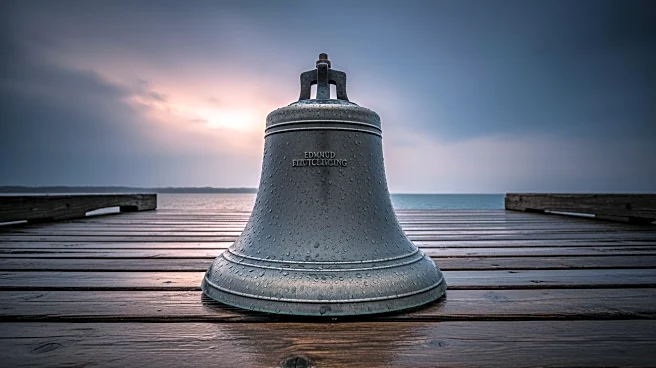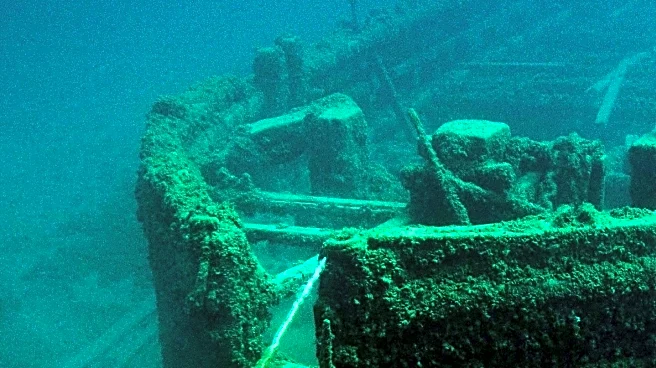What's Happening?
The Edmund Fitzgerald, a famous ore carrier, sank in Lake Superior 50 years ago, resulting in the loss of all 29 crew members. Recent insights from John U. Bacon's book, 'The Gales of November,' reveal
surprising details about the ship and its final voyage. The ship was renowned for its size and speed, often breaking records on the Great Lakes. The crew's last trip was extended for a bonus needed for medical bills, and a decision to take a longer route to avoid a storm backfired, leading to the tragedy. The famous song about the shipwreck by Gordon Lightfoot was almost not recorded.
Why It's Important?
The sinking of the Edmund Fitzgerald remains one of the most well-known maritime disasters in U.S. history, highlighting the dangers of Great Lakes shipping. The new insights into the ship's final voyage provide a deeper understanding of the human and economic factors involved. The tragedy led to significant changes in shipping practices and weather forecasting, improving safety on the Great Lakes. The story continues to captivate the public, serving as a reminder of the power of nature and the risks faced by those who work on the water.
What's Next?
While the families of the crew have moved on, the public's fascination with the Edmund Fitzgerald persists. Future discussions may focus on the lessons learned from the disaster and how they continue to influence maritime safety regulations. The story of the Edmund Fitzgerald also serves as a cultural touchstone, inspiring further exploration in literature, music, and media.
Beyond the Headlines
The enduring interest in the Edmund Fitzgerald highlights the cultural significance of maritime history in the Great Lakes region. The story also underscores the importance of preserving historical narratives and the role of storytelling in shaping public memory. The ship's legacy continues to influence how we understand and commemorate maritime disasters.













